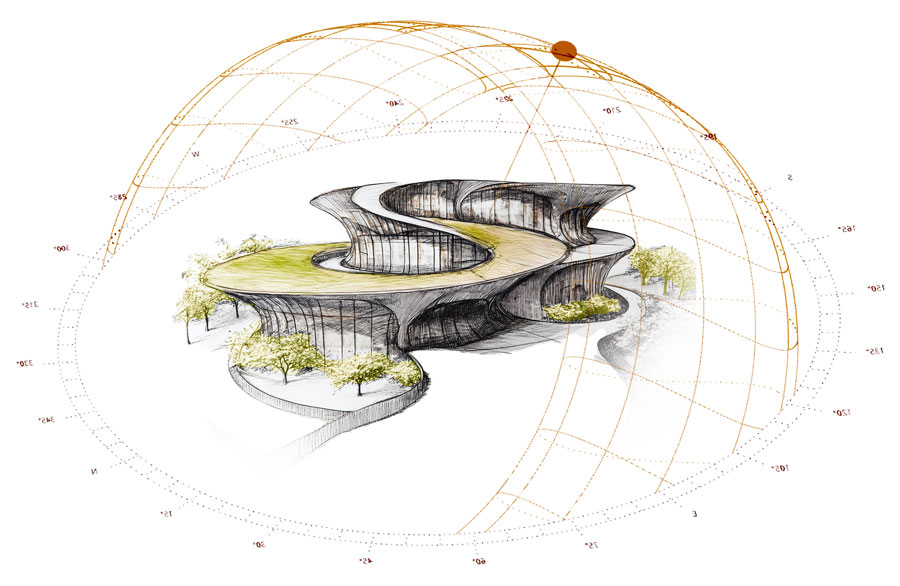
Close

Eco-friendly architecture is guided by several key principles that aim to create sustainable and environmentally responsible buildings:
One of the primary goals of eco-friendly architecture is to reduce energy consumption. This is achieved through:
Eco-friendly buildings prioritize the use of sustainable materials, which are often renewable, recycled, or locally sourced. These materials minimize environmental impact and promote resource conservation. Examples include:
Water is a precious resource, and eco-friendly architecture incorporates strategies to reduce water usage, such as:
Minimizing waste during construction and throughout the building’s life cycle is another critical aspect of eco-friendly architecture. This can be achieved by:

The integration of advanced technologies plays a crucial role in enhancing the sustainability of buildings. Some key technologies include:
Harnessing solar energy is one of the most effective ways to reduce a building’s carbon footprint. Solar technologies include:
Green roofs and walls are living surfaces that offer numerous environmental benefits:
Smart technologies optimise energy use and enhance the comfort of occupants:

The advantages of eco-friendly architecture extend beyond environmental impact to include economic and social benefits:

Highlighting real-world examples of eco-friendly architecture can provide inspiration and demonstrate the effectiveness of sustainable design:
The Brick House Wada, situated amidst rural settlements in Jambhulpada, near Mumbai, India, is a 2500 sq.ft. farmhouse set within hills and farms is unique example of eco friendly architecture. A recipient of multiple awards, the free flowing organic biophilic architecture embraces sustainability at its core.

Maativan Wada, signifies a natural building sanctuary made of mud, amidst the forest’s embrace. It is nestled on the fringes of Wada’s reserved forest area near Mumbai in India, stands as a testament to dedication to environmental consciousness through the integration of material palette, passive design climatology principles and construction technology.
Maativan exhibits integration of nature within the building envelope in the thoughtful planning of spaces around existing trees, preserving existing natural vegetation. The eco friendly architecture design follows biophilic architecture design principles. Shapes were influenced by organic forms found in nature and the ephemeral quality of natural light. The intention was to create an immersive, atmospheric experience that inspires a feeling of being in a forest, in a lush outdoor space under an overgrown natural canopy. The incorporation of organic forms that blend harmoniously with the surroundings takes inspiration from the works and philosophy of architects Nari Gandhi and Javier Senosiain.

Located within a lush tapestry of mango trees, ‘Asmalay‘ is a biophilic farmhouse in Alibag, near Mumbai that embraces the harmonious interplay of architecture and nature. Through a thoughtful fusion of form and function, the design seeks to create immersive experiences where spatial arrangement, materials, lighting, and colors synergize to establish a sense of harmony. The eco friendly architecture integrates natural and recycled materials, traditional wisdom, and passive design methodologies, positioning itself as a celebration of sustainable living.

The material palette responds to local availability and climate. The walls are load-bearing exposed brick, stone or lime plastered wall, creating a play of rich colours and textures. Brickwork is done in rat-trap bond, saving material and keeping internal spaces cooler through insulation. The colourful IPS floors and the polished and unpolished Kota floors break the monotony of bricks and stones. The roof is used to divide spaces with flat filler exposed RCC slabs or sloping ferrocement slabs. The twisted Ferrocement roof with bamboo under-structure covering the living area and the bedrooms, allow for a variation of scale in the spaces. Locally sourced earthen pots are used in filler slabs, further increasing the comfort levels inside.

Eco friendly architecture is not just about reducing environmental impact—it’s about creating spaces that enhance the quality of life for occupants while being mindful of the planet. By embracing sustainable materials, technologies, and design principles, architects can play a pivotal role in shaping a more sustainable future. Whether you’re a homeowner, developer, or architect, the shift towards eco-friendly architecture is a step toward a greener, healthier, and more sustainable world.
Our properties are managed by Saffronstays.
Tel.: 08069160000
Email: book@saffronstays.com
Jambhulpada village,
Wada – Shahapur road,
Wada, Palghar
Maharashtra
Architects – Blurring boundaries